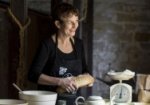We recently hosted a Regency-style breakfast in the grand dining room at Elizabeth Bay House as a “money can’t buy” experience for the literacy charity, Room to Read. The offer included a personalised gastronomy-focused tour of the House followed by a breakfast which was based on the menu plan given to Maria Macarthur in 1812,(you might recall other blog stories that have referred to this useful historical resource). Although 1812 is a little early for Elizabeth Bay House, which was built in the late 1830s, the Macleay’s of Elizabeth Bay and the Enderby’s in England were of similar generation and social standing.
Bills of fare
Room to Read presented the invitation at their gala wine-tasting fundraiser in March, and with all proceeds going to Room to Read, the winning bidder was local Sydney woman Rachel Zehner, who invited nine friends to dine with her to celebrate her birthday by sharing the experience. That left this gastronomer to re-create, as appropriately as possible, a menu from 1812. The wonderful thing about ‘Mrs E’s’ letter is that it comprises dozens of ‘bills of fare’ or menu plans. A typical practice of the day, which continued well into Victorian times, was to present your list of dishes in the way they should be arranged on the table – like a table ‘map’. The original letter remains in private Macarthur family papers, but the published version, Advice to a young Lady in the colonies (Barca ed. 1979) presents the bills of fare in a similar, though typeset, fashion.

‘A breakfast’ in Margaret Barca (ed), Advice to a young lady in the colonies : [being a letter sent from Mrs. E. of England to Maria Macarthur in the Colony of N.S. Wales in 1812], Greenhouse Publications, Collingwood, 1979. Caroline Simpson Library & Research Collection, Sydney Living Museums 642.4 ADV
“In case at any time you want such a thing here is a guide”
And as the name of the published version suggests, it is a letter of advice – with hints, tips and sage words on how to manage servants, household economy, and most importantly, being a gracious and sociable host. Her advice on breakfast is very useful for those of us wanting to try one themselves, even offering a little latitude for how and what your serve – for example, you can use whole chickens or try hand-sliced smoked breast; lobster tail can be sliced into medallions or presented as a salad served in the tail shell, or even potted, similarly the eggs can be served whole (or Scotched!) or dressed with a light mayonnaise, salad-style.
Now do not suppose because I have given you the form of a breakfast that you must give one, far from it – but in case at any time you want such a thing here is a guide which you may reduce as much as you please.
Do not have the tea board on the table, it takes up room, & is troublesome in a party – at one end of the table have the tea equipage with the urn, at the other, coffee – some cups of chocolate at each end – dry toast – buttered toast – pats of butter – rolls hot & cold – cake – bread & butter – cold chicken (roasted) ham or tongue – cold beef – lobsters, Prawns or Shrimps, or all of them – several dishes of fruit, which fill up, & look extremely well, & when in season come cheap – set them out with leaves – some sweet meats if you choose…
Observe there must be a napkin, plate, knife, fork & dessert spoon to every body – remember eggs too, on table, mind the cloth is laid – have both milk & cream on table… (p48-50)
It’s all in the planning
This breakfast was an interesting event to put together from a gastronomic perspective, with two critical aspects – the food, and the table. First I had to make sure I had enough dishes and serving vessels to accommodate the food and replicate the table plan. Using Mrs E’s trusty ‘map’ as guide I assembled all the dishes I’d allocated ‘in form’ with a label on each in the prep-kitchen.
Deciphering the menu
As a ‘cold collation’ the food itself isn’t too difficult to reproduce, although does require a bit of preparation and planning. Many things are self-explanatory – the simpler items such as the selection of dried fruit, sweetmeats (preserved ginger or candied fruits) and nuts would be basic pantry stores in any well-stocked households, but I was left to ‘interpret’ a few items. Cake for example – cook books from the period list all manner of cakes, from scone-like creations to yeast based fruit buns, but I decided for this occasion to serve a Regency classic ‘seed cake’ – a simple butter cake studded with a generous spoonful of caraway seeds (recipe below).
Research indicated that French plums are good old-fashioned prunes, which I decided to embellish with a good slug of port before poaching, and made an excellent accompaniment to the ham. Eggs seemed somewhat plain sitting shoulder to shoulder with so many other tasty dishes, but Maria Rundell’s New system of domestic cookery from 1816 came to the rescue with Scotch eggs, which proved an excellent choice served with piccalilli (Indian pickle chutney).
Tricky tongue
Tongue is probably the biggest hurdle for modern cooks, as they’re not commonly found in shops any more, and are a bit fiddly to cook. Although I was quite prepared to cook one, I was delighted to find home-cured veal tongue on the charcuterie menu at Bistro Mint – conveniently located next to my office, and Joey, their chef, supplied some beautifully carved slices. The range and quantity of bread options – toast, buttered and dry, rolls and bread and butter may for some, seem excessive, but helps fill the table, which in other sections of her letter, should not be crowded as it is ‘not genteel’.
The proof of the pudding is as they say, in the eating, and I was surprised at the response to the foods on the table. The selection of teas (Chinese only, as the Indian tea trade was not yet active in before the 1840s) and the idea that hot chocolate was a breakfast drink sparked curiosity and historical interest. Lobster drew appropriate relish, and the prawns; the French plums were a conversation piece, as was the tongue. But funnily enough, for all the extravagance, the menu item that drew the most comment and delight was the humble seed cake, a Regency staple now all-but lost to history.
Turning breakfast into dinner
Mrs E gives us one final, highly civilised, tip for hosting a breakfast, Regency-style:
Breakfasts of company are not usually given before 1 o’clock, & it is customary to put wine in small decanters on the table, & of course,
wine glasses – & also 2 small decanters of water, & 2 or 3 tumblers, so that breakfast is turned into a tolerable dinner.
Scotch eggs
Ingredients
- 6 Small eggs
- 200g good-quality sausage mince
- 100g pork mince
- 100g veal mince
- 1 tablespoon mixed herbs (fresh or dried)
- 1 tablespoon worcestershire sauce
- 1 tablespoon anchovy sauce (or fish sauce)
- 2 heaped tablespoons plain flour
- 2 tablespoons olive oil
- dark fruit chutney (or tomato chutney), to serve
Note
Scotch, or Scotched, eggs make a lovely addition to a Regency-inspired breakfast, a ploughman's lunch or a picnic spread.
Makes 6
Directions
| Bring the eggs to the boil in a saucepan of cold water, stirring in a circular motion to help 'centre' the yolks. Reduce the heat and simmer for 10 minutes. Transfer the eggs to a non-metallic bowl filled with cold water and allow to cool. | |
| Meanwhile, in a food processor, mix together the sausage mince, pork mince and veal mince, herbs and sauces, and season to taste. Alternatively, with clean, dampened hands, work the mixture together until all ingredients are well blended. Roll the mixture between two sheets of baking paper to a 5-mm thickness, and set aside until you are ready to coat the eggs. | |
| Preheat the oven to 180ºC (160ºC fan-forced). Peel the eggs, making sure they are clear of shell specks (rinse and pat dry to be sure). Roll them in the flour to lightly coat. Remove the top layer of baking paper from the mince mixture. Place an egg onto the mince and, with moistened hands, wrap it in a portion of the mince, pinching the edges together to fully enclose the egg. Roll the covered egg lightly between both hands to create a smooth finish. Repeat for each egg. | |
| Heat the oil in a large frying pan and brown the eggs all over, turning regularly. Transfer to an ovenproof dish and bake for 10 minutes to allow the mince to cook through. Serve warm or cold with chutney. | |
| Cook's tip – to save time you can skin ready-made full-flavoured breakfast-style sausages (ie not too coarse) instead of making your own mince mixture. | |
Regency-style French plums (prunes)
Ingredients
- 300g pitted prunes
- 1/2 cup port wine
- 1 cinnamon quill
- 1 star anise, optional
Note
Prunes sometimes get a bad rap, but they are quite delicious as an accompaniment to roast pork or duck, hand-cut smoked ham or chicken, warmed as a breakfast dish with yoghurt or as a dessert dish with custard.
Directions
| Allow the prunes to soak in the port overnight, or for a few days if you prefer. Simmer the prunes, cinnamon quill and star anise (if using) and any remaining port in a small saucepan over low heat, adding enough water to just cover the fruit. Simmer until the prunes become soft and plump, then discard the spices. Store in a refrigerator for up to two weeks. | |
Seedcake
Ingredients
- 2 eggs
- 1/2 cup sugar
- 125g butter, melted
- 1/2 teaspoon vanilla
- 125g self-raising flour
- 1 tablespoon caraway seeds
Note
Seedcakes, flavoured with caraway, were popular fare throughout the 18th and 19th centuries, fading from glory in the early 1900s. If you don't want to make a cake from scratch (although this is a very easy recipe), you can do what my friend Jemma's grandmother did – simply add a tablespoon of caraway seeds to a store-bought sponge or butter cake mix!
Directions
| Preheat oven to 180ºC and grease and flour a loaf tin. Beat the eggs and sugar together until pale and frothy. Add the butter, vanilla, flour and seeds, and mix well. Pour batter into tin and bake for 35–40 minutes or until the top of the cake is golden and a skewer tests clean. Allow the cake to cool slightly in the tin, then transfer it to a cooling rack. Slice when cold. | |
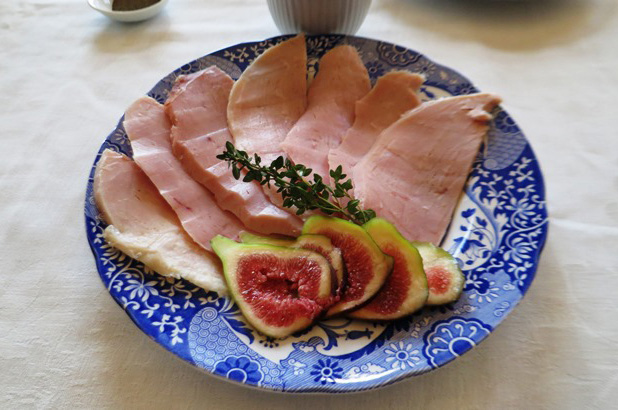
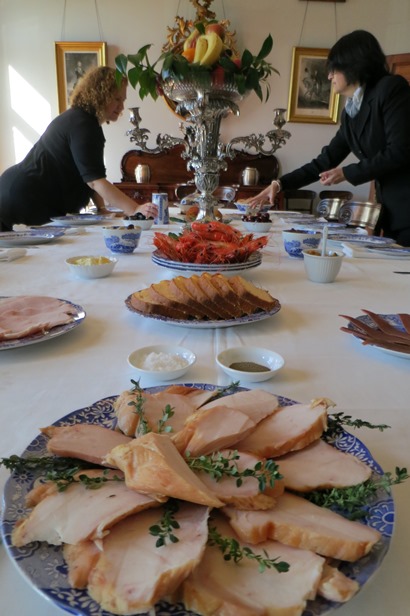
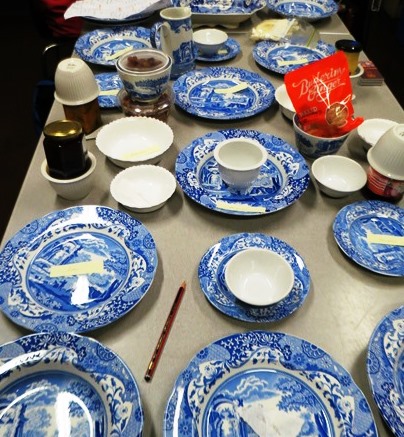
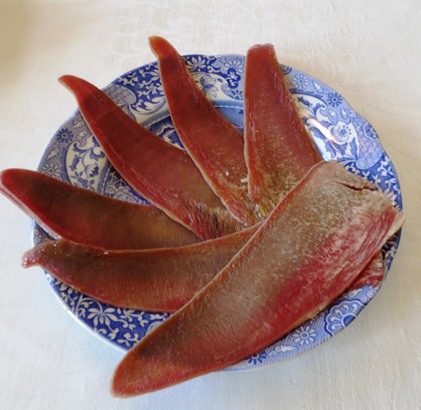
 Print recipe
Print recipe

